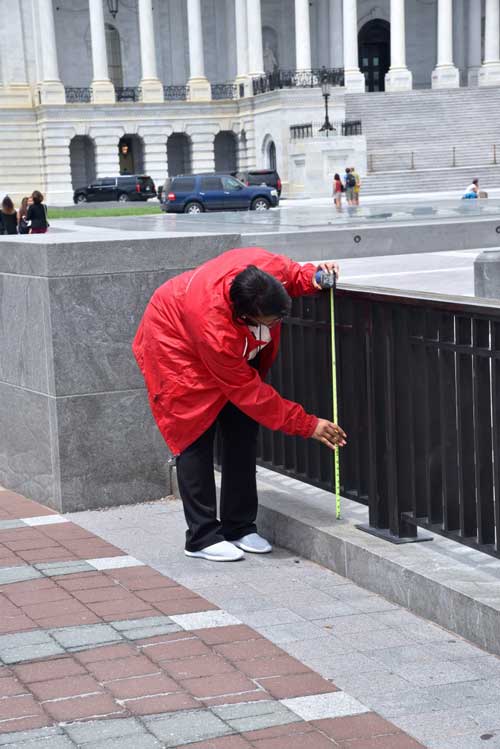
Every Congress, safety specialists from the Office of Congressional Workplace Rights (OCWR) inspect legislative branch offices and facilities to ensure that they are free from known safety hazards under the Occupational Safety and Health Act (OSH Act). The results of the biennial inspections are reported to congressional leadership and the Architect of the Capitol.
These inspections focus primarily on high-hazard areas – i.e., those that pose the greatest risk of injury, illness, and death to legislative branch employees. The safety specialists also review the employing offices’ safety programs to ensure that they satisfy the requirements of the OSH Act.
All Capitol Hill offices of Senators and Representatives are inspected once each Congress, both for compliance with applicable occupational safety and health laws and for accessibility to individuals with disabilities. Although the OCWR does not inspect Members’ district and state offices in person, we do provide numerous online OSH resources to help out-of-area employees maintain safe workplaces, as well as an OSH self-certification form that guides district and state staff to inspect their own offices for common electrical and means of egress hazards. The OCWR will also conduct a virtual inspection of a Member’s district or state office upon request from the office or an employee working in the office. Members whose Capitol Hill offices are found to be hazard-free during the biennial inspection, and who submit OSH self-certifications for their district and state offices, are eligible to receive the OCWR’s Safety Awards.
Hazards identified during the biennial inspection are reported to the employing offices responsible for abating them, and the OCWR’s OSH team works with the employing offices to monitor and support their abatement efforts. The failure to correct the hazards may result in the issuance of citations and, ultimately, the filing of administrative complaints against the responsible employing office. However, the OCWR’s goal is to work cooperatively with the employing offices to abate the identified hazards, educate employees and managers to prevent those hazards from recurring, and promote best practices in occupational safety and health.